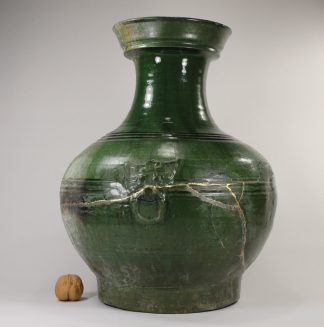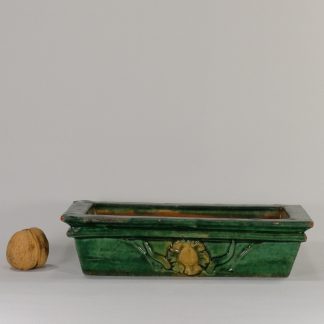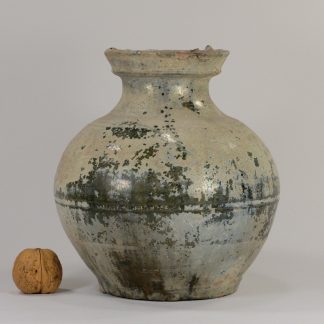Description
Description: Chinese burnished terracotta jar of Siwa culture. As mentioned in the Notes here below, the jars of this Bronze Age culture has a distinctive saddle shaped mouth. Ceramic pots of this culture are rarest if compared with the pottery production of the other cotemporary, or even earlier, cultures. The majority of Siwa culture jars has the squat shape and reddish body that are well represented by the one shown in the last picture; compared to them, this jar has a more elegant shape (at least for today’s taste), a more pronounced saddle shape and an exceptionally smoothed burnished surface. The varying shades of surface’s color are due to uneven temperature distribution during firing by primitive firing techniques.
Dating: 14th – 11th Century B.C.
Size: 25 cm high
Provenance: Antiquarian market
References: See in the last picture a more standard example sold by Bonhams.
Notes: From Wikipedia: “The Siwa culture (Chinese: 寺洼文化) was a Bronze Age culture in southeast Gansu Province, China (ed: mainly along the Tao River, a tributary of the Yellow River). It was discovered by Swedish geologist Johan Gunnar Andersson in 1924 at Mount Siwa (寺洼山) in Lintao County, hence its name. It flourished circa 14th to 11th century BC, it is tentatively attributed to the cultures of the Di (狄) and Qiang (羌) peoples. The archaeological culture is divided into two phases: the early phase associated with the sites at Lintao, Zhuoni, Lintan, and Heshui; and, the final phase during the late Shang and proto-Zhou periods associated with the Jiuzhan, Xujianian, and Lanquiao sites. Siwa culture is known for producing a type of pottery that had saddle-shaped mouths.”















Reviews
There are no reviews yet.